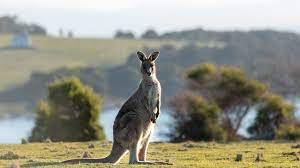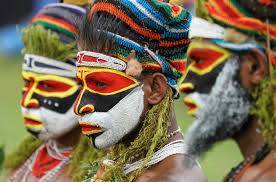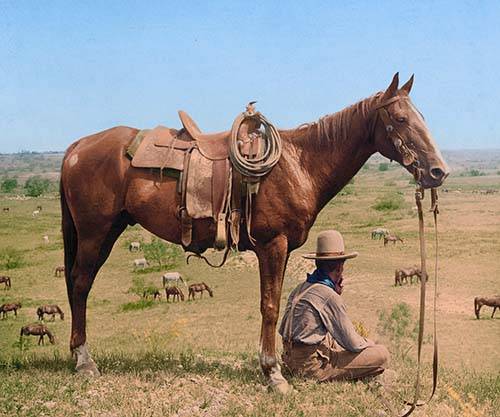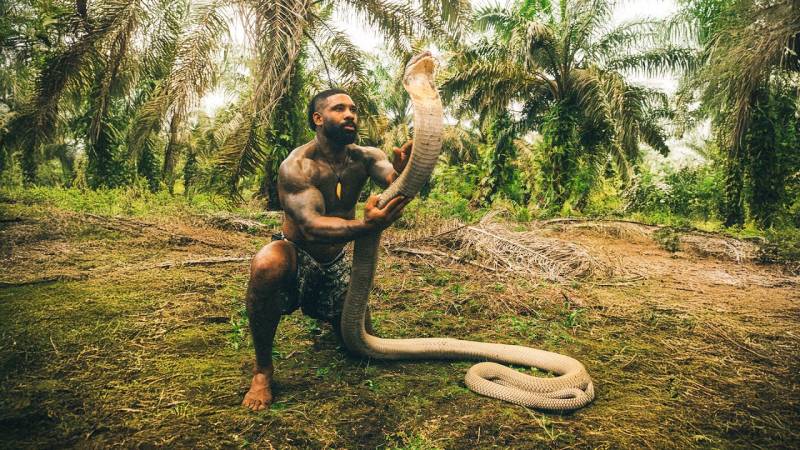Once the rural retreat of a powerboat-racing countess, this uninhabited isle is now a slow-travel paradise that's home to Scotland's most exotic mammal.
There is no graceful way to exit a tiny inflatable vessel as it crashes against the shoreline in an unexpected seiche. With my rucksack dashed over one shoulder and one leg cocked over the dank bow, I clumsily hopped out and plonked my right boot straight into Loch Lomond’s bone-chilling water. My left boot soon followed, thudding into the swampy grass on the remote island of Inchconnachan, the former summertime playground of one Fiona Bryde Gore (née Colquhoun), Countess of Arran – and home to Scotland's only colony of wallabies.
After being enamoured by Inchconnachan for years, I had finally arrived on this uninhabited, 103-acre island in Loch Lomond & The Trossachs National Park; albeit in far less style than a certain Lady Arran would have done. A member of the famous Clan Colquhoun – that, under Luss Estates, still own several islands and a stretch of the mainland on the west of Loch Lomond – Fiona Colquhoun fell in love with this hidden oasis and ordered a timber-framed holiday home, boathouse and pier for her personal use. All three of these are now derelict; the latter explaining my clumsy entrance.
Colquhoun, born in 1918, grew up on the bonnie banks o’ Loch Lomond and loved exploring the islands surrounding her childhood home at Rossdhu, on the western shore of Loch Lomond. She often returned to Inchconnachan – meaning "The Colquhoun's Island" in Scottish Gaelic – over other nearby isles of Inchtavannach, Inchmoan and Inchcruin, due to its mid-loch location and secluded bays that made it ideal for powerboating.
She would eventually earn the nickname 'the fastest granny on water'
After taking part in a powerboat speed trial aboard the racing boat Miss England III on Loch Lomond at the age of 13, Colquhoun's need for speed gathered pace. She would eventually earn the nickname "the fastest granny on water". And after becoming the first woman to travel faster than 100mph on water by hitting a blistering 103mph on Lake Windermere in 1980, she was awarded the esteemed Segrave Trophy, which is given to Britons demonstrating "outstanding skill, courage and initiative on land, water and in the air".
"From all accounts, [Lady Arran] was a quirky character," said Carron Tobin, the former executive director at Loch Lomond & The Trossachs National Park. Today, Inchconnachan remains something of a testament to the countess' quirks.
After marrying Sir Arthur Gore, the 8th Earl of Arran, in 1937, Colquhoun became the Countess of Arran. At their home in Hemel Hempstead, Hertfordshire, Gore's penchant for keeping non-native animals, such as llamas, alpacas and wallabies, was well-documented.
"I understand she introduced wallabies to the island shortly after World War Two, having kept them at her home in England," Tobin said. "I believe there are around 50 to 60 still living on the island today. Inchconnachan is also home to the capercaillie, an endangered Scottish woodland grouse. It is disputed, but they seem happy cohabiting with the wallabies."
Considered the most exotic animal species in Scotland, Inchconnachan's red-necked wallabies are a smaller relative of kangaroos. Though they're native to the temperate reaches of eastern Australia and Tasmania, the wallabies seem to have developed a particular fondness for Inchconnachan's moody climate over the years, and are even known to hop across the frozen loch and frolic in the nearby woodlands during severe winters.
Like Colquhoun (who passed away in 2013) and her pouched pets, I, too, have a particular fondness for Loch Lomond and have spent countless days exploring it by foot and boat over the years. The largest lake in Scotland, Lomond is laced with 22 islands and 27 islets, mostly covered in dense woodland. It's those islands, and specifically Inchconnachan, that had long piqued my interest. I was always keen to find out what – or who – was hopping around on these far-flung arboreous isles.
Scotland is one of just a handful of countries in the world where wild camping is legal
While Lady Colquhoun used Inchconnachan to fuel her speed demon dreams, these days it – and most islands on Loch Lomond – is inaccessible by ferry or public boat. Instead, slow-travelling adventure seekers like myself can hire a kayak, canoe or paddleboard from the nearby village of Luss and paddle 1km across the usually calm waters to the island. Once there, another adventure awaits.
Few travellers may realise that, like Sweden's famed law of wanderlust, Scotland is one of just a handful of countries in the world (and the only country in the UK) where wild camping is legal. And while certain parts of the Loch Lomond & The Trossachs National Park are protected by wild camping byelaws between March and September, thanks to Scotland's 2003 Land Reform Act, anyone is free to camp on most unenclosed land throughout the country – including on Inchconnachan.
After being owned by the Clan Colquhoun since the 14th Century, Scotland's uninhabited "wallaby island" made headlines in July 2020 when it was put up for sale. It eventually sold in March 2021, but despite its new ownership and status as a private island, Scotland's wild camping access rights still apply – though it's important to travel responsibly.
The key thing, says Tobin, is "to leave no trace, and to take back whatever you brought over".
WILD CAMPING IN SCOTLAND
If you're planning a wild camping trip in Scotland, be sure to familiarise yourself with The Scottish Outdoor Access Code to abide by the country's leave-no-trace policy.
So, there I was, ambling around the island's soaked marshes searching for somewhere to camp. I decided on the west shore facing The Narrows, a river-like snaking stretch of calm water between Inchconnachan and Inchtavannach whose shelter from prevailing winds provides quietude. As the rain showers passed and I pitched my tent, I soon realised I had landed a suntrap – one that was a short stroll from the countess' holiday lodge.
Today, the long-abandoned retreat resembles little more than a decaying squat, with its rotting floorboards, sodden mattresses, rusty oven and shattered bathtub all in situ. The island's charms lay elsewhere, however.
Inchconnachan is fairly flat, and its handful trails lead to untouched beaches, age-old conifers and oaks (making it a Site of Special Scientific Interest in Scotland) and elevated lake views from the island's humble 50m summit. Sharp-eyed visitors should also look upwards to spot a pair of nesting sea eagles, which recently returned to the area for the first time in more than a century.
As night began to fall, I followed a trail flanked by knee-height bilberry bushes and burnt orange bracken to a sandy beach on the island's north end, which provides blissful, uninterrupted views of one of Scotland's most popular munros, Ben Lomond.
All of a sudden, I heard something stirring beneath the trees
Then, all of a sudden, I heard something stirring beneath the trees. I slowly turned around, torch-in-hand, to see if Scotland's rarest of beasts had appeared. It had not, so I carried on down the trail. After a few more minutes, a red-necked marsupial no taller than 50cm hopped across my path, a mere few metres away, before acknowledging my company and scurrying away. A brief, but beautiful, encounter.
As tempting as it was to sleep under the stars, the weather soon turned and reminded me that I was positively in Scotland in October. I left the solitude of the beach for my sheltered tent on other side of the island, from where I rustled up a portable stove-cooked chilli dinner and fell asleep to the sound of squawking birds, chattering ducks and – yes – frolicking wallabies.
At 05:45, I was awoken by the hammering rain against the canvas and the sound of what I thought was a bellowing deer stag. I unzipped my tent, cautiously clambered outside and sat as the sun slowly appeared above the Luss Hills to the west. My unexpected alarm was indeed a red stag by the hillside.
As the rain relented and the mist began to clear, I spotted something in the water. What appeared to be a doe was swimming across The Narrows, possibly beckoned by the call of her new mate. In all my years exploring the Loch, this was the epitome of Scottish scenic splendour. I could see why Lady Arran kept coming back.
Slowcomotion is a BBC Travel series that celebrates slow, self-propelled travel and invites readers to get outside and reconnect with the world in a safe and sustainable way.
SOURCE : bbc




